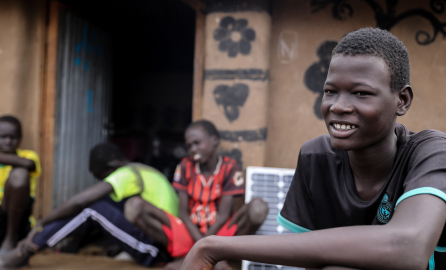Life skills training
Life skills are broadly defined as the psychosocial and interpersonal skills that are important for successful employment. Life skills can include:
- basic skills in literacy and numeracy,
- practical skills like financial literacy,
- interpersonal skills,
- support to job search, such as interview technique.
|
Evidence Rating LOW |
Employment MEDIUM |
|
Cost INSUFFICIENT EVIDENCE |
Skills MEDIUM |
|
Earnings Impact LOW |
Labour Market Orientation EMPLOYABILITY |
|
Setting SCHOOL or COLLEGE, COMMUNITY |
✅Impact
Life skills training has a significant moderate size effect on employment, equivalent to an 11% increase compared to a comparison group not receiving life skills training. There is a similar size effect on skills and a slightly smaller effect on wages and earnings. The effects on business performance and material welfare are also positive, though not significant in the case of business performance.
📑Context
Life skills training is often offered as one component of a broader programme, either as part of a wider training course, or along with other interventions such as business start-up kits.
Life skills training may be offered in schools or colleges, as well as in a community setting.
How is life skills training expected to increase youth employment?
Life skills training can work through several channels:
- Increase employability and the ability of young people to start and run their own business. For the former, life skills training includes practical advice on CV preparation, interview technique and job search. Life skills training often includes financial literacy which can be important for youth wishing to start their own business.
- Build self-efficacy, with an increase in confidence which helps the young person in securing and maintaining employment, ensuring adequate terms and conditions, or starting and running their own business.
- The combination of life skills training with other interventions can increase the effectiveness of both. For example, vocational training may provide necessary skills for a job, which will help get an interview, but the life skills improve interview and job performance. Life skills can help with confidence and skills to run a business, but combining life skills with a start-up grant or connection to microfinance can help the young person start the business.
🖋Design choices
Design choices involve:
- What to cover: in SSA, foundational skills are often lacking and so may need to be included if not part of the vocational curriculum.
- What to offer alongside life skills: life skills may be offered jointly with a wide range of other youth employment activities, such as support to employment, business skills and vocational training.
- Sequencing: sequencing the components, starting with life skills to help build the confidence of the participants and support them in making informed choices for the other training modules they select, e.g. vocational modules.
❗Implementation issues
Courses are often of too short a duration for youth to acquire the life skills.
Frequently there are funding constraints or delays meaning insufficient staff, or failing to reach as many young people as planned.
Weak sustainability is an issue if local training institutions do not adopt the life skills curriculum, which is likely if the project used external trainers for delivery.
🦾Strength of evidence
There is low confidence in the evidence of effects (impact evaluations) and medium confidence in findings from implementation evidence (7 process evaluations).
🔎Implications for research
Life skills as implemented by practitioners need to be more rigorously evaluated. Within-intervention studies on the most relevant curriculum for different population groups, e.g. graduates compared to those without secondary education, would be particularly useful.
📜Evidence based findings for policy and practice
- The evidence supports the continuation of life skills training in combination with other interventions, both as part of a broader training programme but also combined with other interventions such as support to employment.
- Efforts should be made to build life skills into the national curriculum at secondary and tertiary level to ensure sustainability.
Access the Full Technical Report below
Related documents
Life Skills Training
English (1.82 MB - PDF)